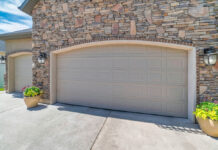Buying a dog kennel is a long-term purchase, quite similar to you renovating your own home. Just as your home deserves meticulous care in setting it up, so should you look into all aspects of your dog’s home to ensure his safety, comfort and the durability of his den. Naturally, you will look for a home for your furry friend that can brave a storm while at the same time block out the sun. After all, you aren’t going to be changing his kennel with every passing season.
So, if you’re wondering what goes into choosing an all-weather home for your furry friend, trust we when we say, there’s a lot that goes in! Don’t fret, your dog house experts are right on the job! To break things down for you, we’ve put together weather-specific requirements for a dog kennel. Make sure you tick off all these requirements from your checklist when choosing a dog house! Read on to know what they are.
Monsoon
First up, a simple design feature to prevent water accumulation on your dog’s den is to go for a slated roof. Most dog kennel designs have a single panel slant or a double V-shaped one. Either way, ensure water trickles off the roof of your dog house and doesn’t accumulate anywhere. In addition to this, it is necessary that the roof itself is waterproof, so that constant exposure to water and humidity doesn’t wear it down. A thick layer of asphalt is your best bet in making the roof waterproof. If asphalt is not feasible, tar paper is also a waterproof material that’s ideal for roofs in wet regions.
During rains, water tends to seep into the soil, making it damp. This dampness can rot the bottom of a dog house, especially if it is made of wood. Building a concrete slab below the dog kennel ensures groundwater doesn’t dilapidate it sooner than its lifespan. Take care to build a slab that’s bigger than the dog kennel itself, lest your dog’s growth makes you replace your dog house for a bigger one. If a concrete slab is something you have missed incorporating, simply go for an elevated dog house which has legs holding it a few inches off ground level.
Your dog needs ventilation when he’s inside his den, and that’s why windows are imperative. But, what do you do when rainwater comes in through the windows, disturbing his sleep and health? Go for plastic glass windows that are sealed off with liquid rubber. You’re guaranteed to keep away any mischief that can cause damage to your four-legged friend and his home.
Winter
There’s nothing like a thick-paneled wood dog house for the first step in winter insulation. Wood is a poor conductor of heat or cold, and hence keeps your dog safe from extreme temperatures. Another design hack is having an offset door to keep the chill winter winds at bay. That way your dog has a cozy nook to curl into without any exposure to the outdoors.
If it is particularly cold, you can invest in heating pads that can be placed along the surface of the kennel and covered with a thick blanket. For this, you will have to make sure that the kennel has a few extra inches of height over and above your dog’s height requirement. That way, the extra heating layers won’t come in the way of his comfort.
To err on the side of caution, let your furry friend into your home in case of blizzards and snowstorms, creating a cozy nook for him close to you as a means of assurance. You don’t want to leave him shivering outdoors and wreak havoc on his health.
Summer
Ventilation, ventilation and more ventilation! Your canine is going to need all the fresh air to keep him going through the summer. So throw open those kennel windows! But at the same time, do take care that they do not have direct sun rays and the windows are on the opposite side of sunrise.
Summer is particularly a risky time for outdoor dogs, as the heat, physical activities and quick burnout can dehydrate them. This can lead to various sicknesses such as vomiting, loss of consciousness, and thickened saliva, among others. While there are smart collars for your dog that alert dog owners about their pet’s body parameters, it’s already better to stay vigilant in the summers for your dog’s comfort and health.
An asphalt-insulated roof is your safest bet to ensure shot heat insulation. What’s more, if your dog house is made of wood, you can be rest assured that it won’t heat up easily and keep the interiors relatively cooler. It is for this reason that choosing a wood dog house is the most practical choice.
A great summer saver is also a little slide-out patio attached to your dog kennel. This patio let’s him lounge on an extension of his home for some fresh air. That way, he has the best of both worlds!
Paint your dog kennel a soft, pleasing color to help or reflect off most of the heat. White, soft blue or yellow are safe bets. What’s more, you can go a step further and go for UV protected paint that helps keep the harmful sun rays at bay. If you’re in an area with particularly rough weather, you will have to update this coat of paint every few years.
Taking care of your dog begins with taking care of his needs and comfort. Make sure you clean and disinfect his kennel often to avoid ticks and other fur diseases. For this purpose, a dog house with a removable roof is ideal, to give you a top-view of the entire kennel and help clean effectively. After all, a happy home begins with a clean one!
Now that we’ve filled you in on all the weather essentials for your four-legged friend’s den, we hope you’re all geared up to make the right choice.
Find a Home-Based Business to Start-Up >>> Hundreds of Business Listings.















































